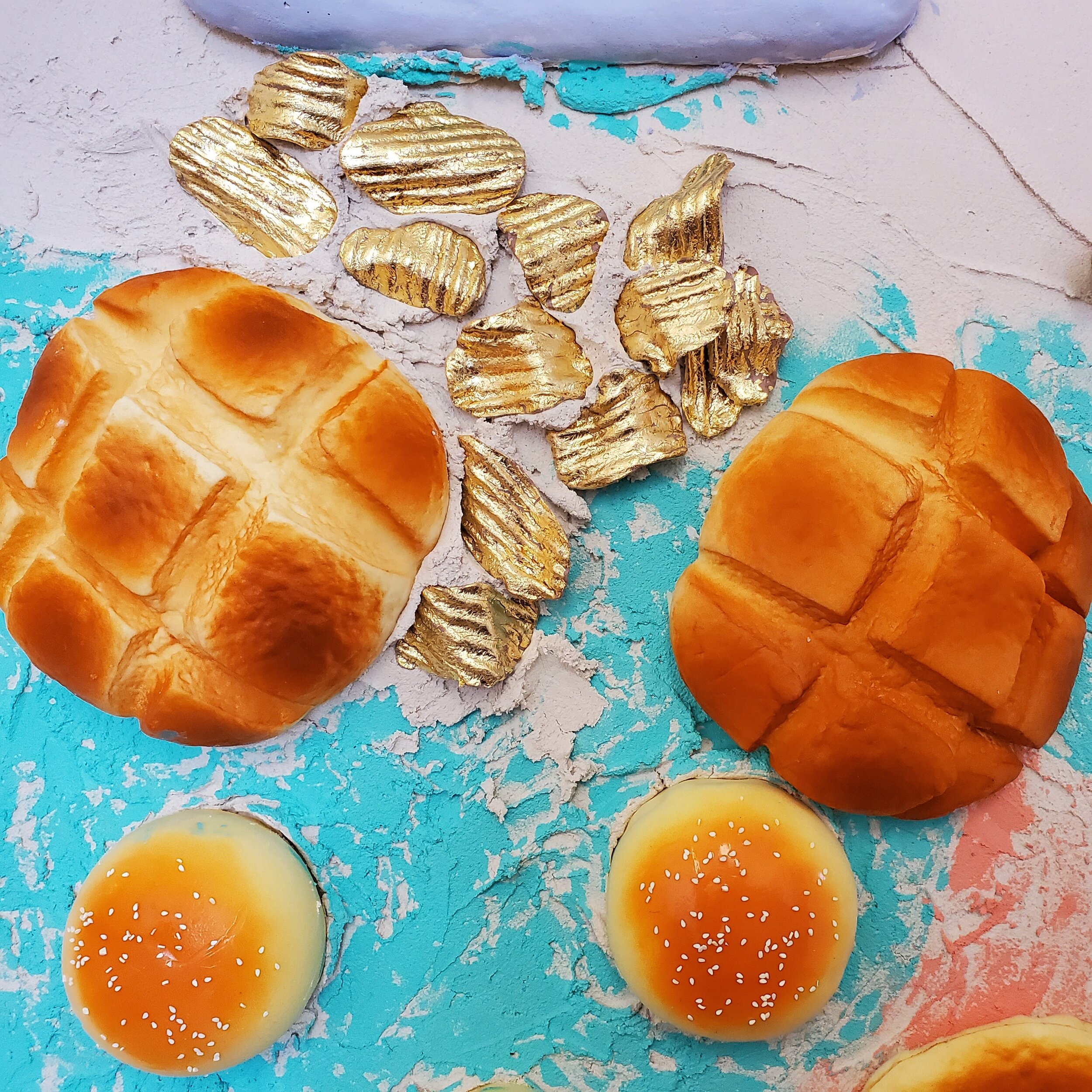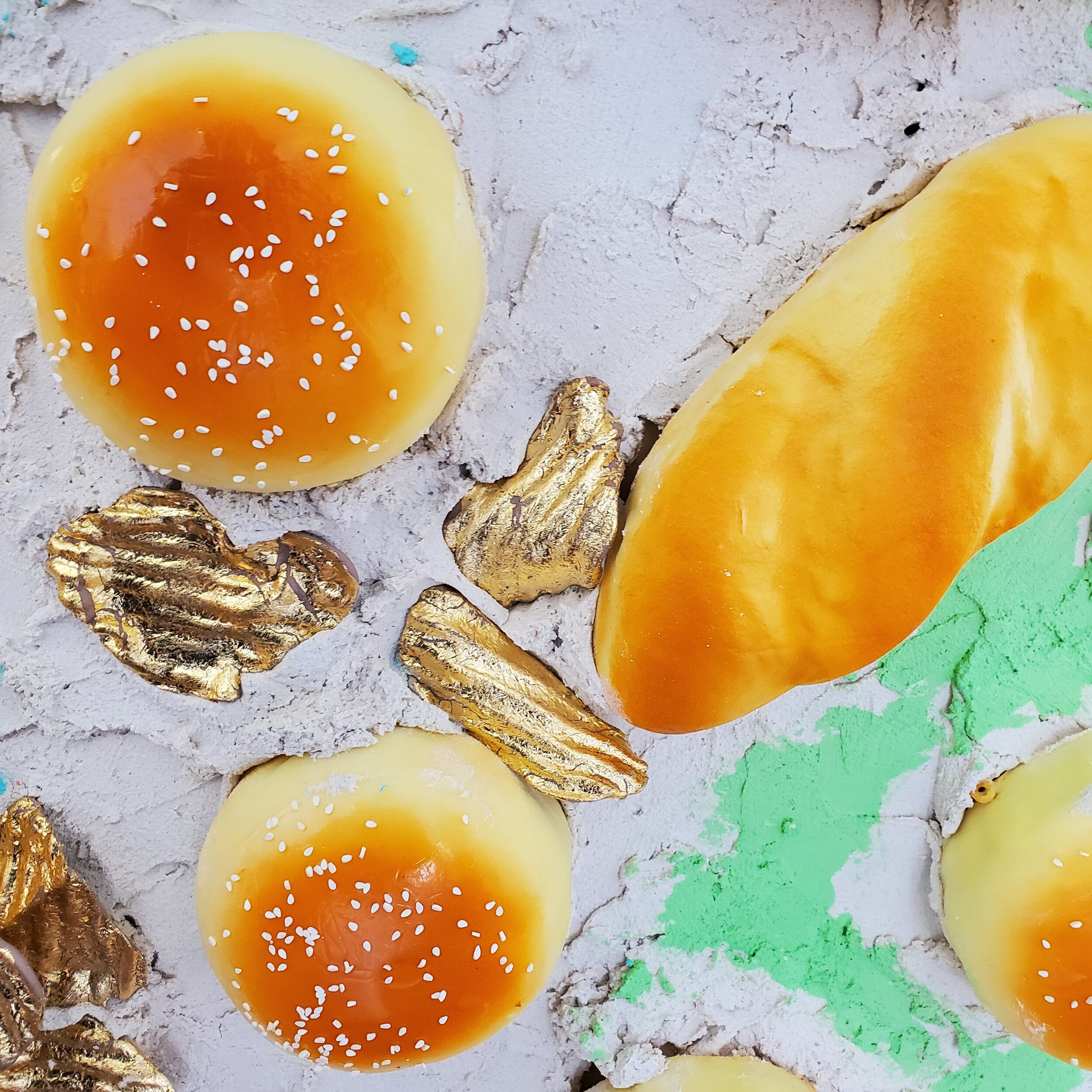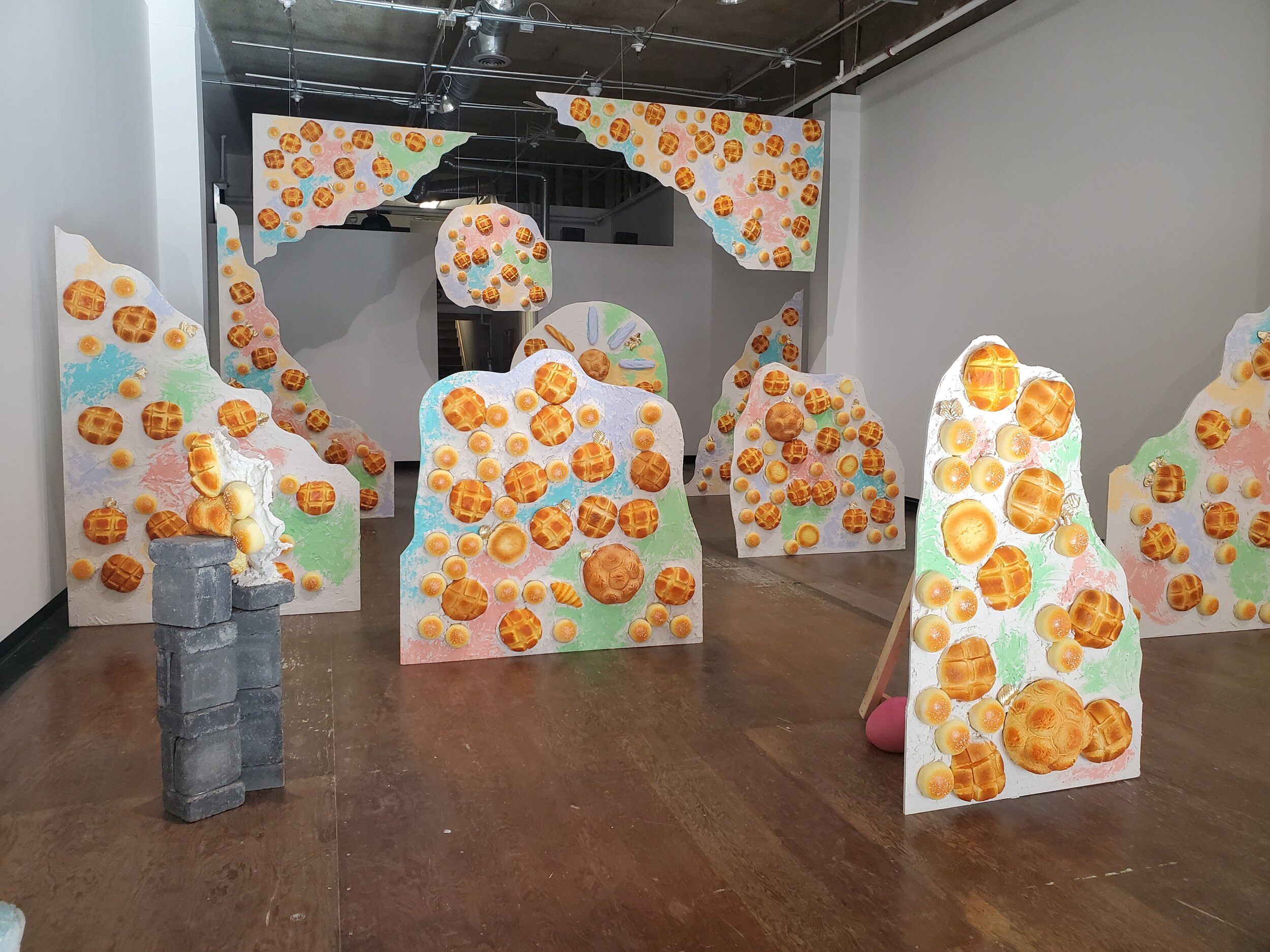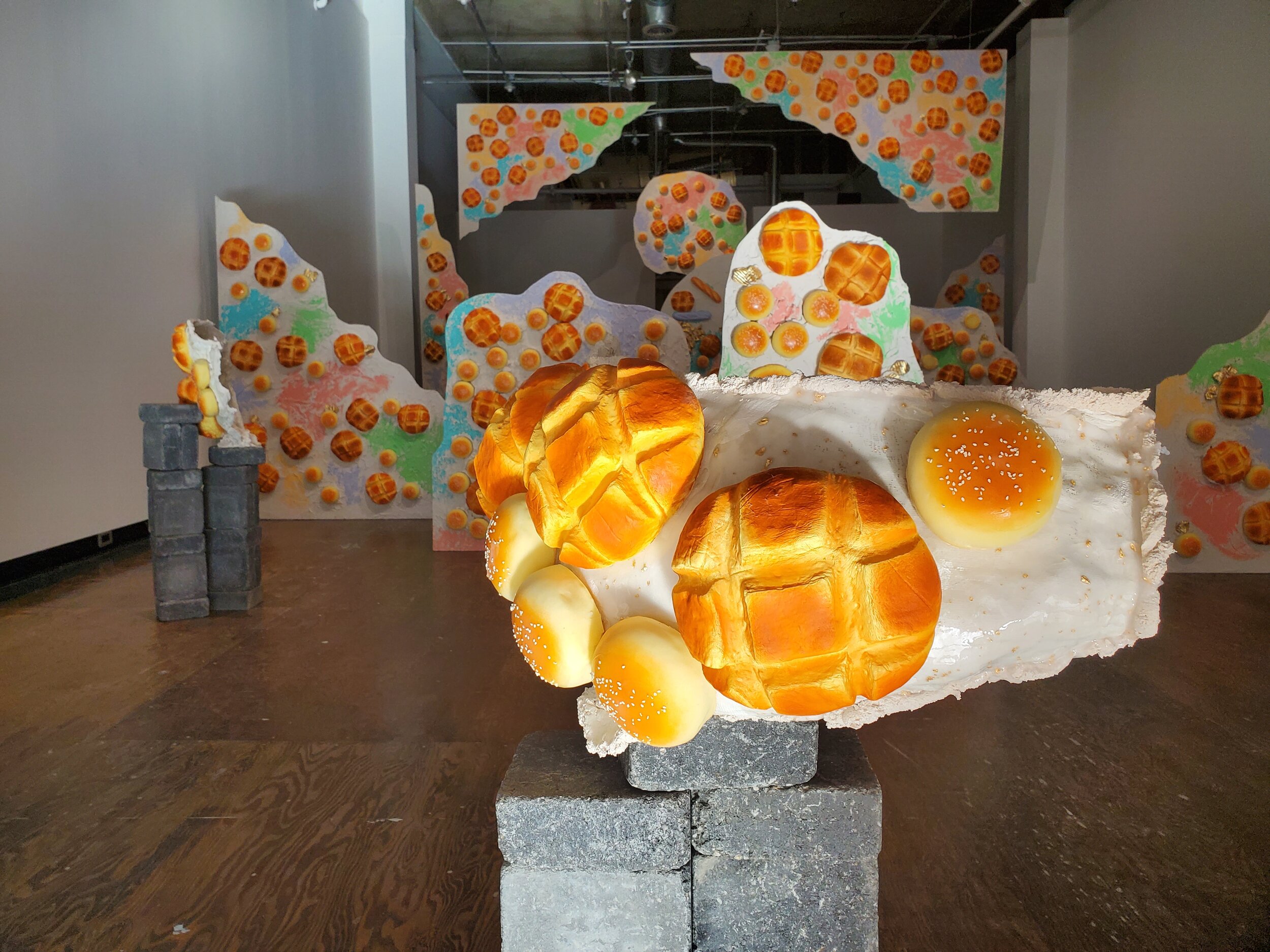

In the fifteenth century Nero’s Domus Aurea, a forgotten underworld palace was rediscovered beneath the streets of Rome. The rooms were ornately decorated with frescos, mosaics, and abundant gold leaf. In awe, artists would visit the site, becoming heavily influenced by the spectacle. Deeming the ruin ‘grottesca’ or ‘of the cave’, the imagery and word would eventually morph into the contemporary ‘grotesque’.1
Noticing that works depicting fat or transgressive bodies are often categorized as grotesque, Schneider decided to appropriate the root of the word (grotto-esque) to imagine a grotto made of squishy adipose-like bread. This Grotto Breathes is an immersive exhibition; imagery of cheap carbohydrates like bread and potato chips complicates understandings of fatness, food, and the modern-day understanding of the word grotesque. Simultaneously beguiling and threatening 2, we cannot help but be drawn to the grotesque. This murky fascination serves as the catalyst from which to renegotiate understandings of fatness through the architecture and slippery meaning of the grotesque (grotto-esque).
1,2 Squire, Michael. “Fantasies so varied and bizarre”: The Domus Aurea, the Renaissance, and the “grotesque”’, in M. Dinter and E. Buckley (eds.), The Blackwell Companion to the Age of Nero (Malden, MA: Wiley-Blackwell), pp. 449. 2012.










In the fifteenth century Nero’s Domus Aurea, a forgotten underworld palace was rediscovered beneath the streets of Rome. The rooms were ornately decorated with frescos, mosaics, and abundant gold leaf. In awe, artists would visit the site, becoming heavily influenced by the spectacle. Deeming the ruin ‘grottesca’ or ‘of the cave’, the imagery and word would eventually morph into the contemporary ‘grotesque’.1
Noticing that works depicting fat or transgressive bodies are often categorized as grotesque, Schneider decided to appropriate the root of the word (grotto-esque) to imagine a grotto made of squishy adipose-like bread. This Grotto Breathes is an immersive exhibition; imagery of cheap carbohydrates like bread and potato chips complicates understandings of fatness, food, and the modern-day understanding of the word grotesque. Simultaneously beguiling and threatening 2, we cannot help but be drawn to the grotesque. This murky fascination serves as the catalyst from which to renegotiate understandings of fatness through the architecture and slippery meaning of the grotesque (grotto-esque).
1,2 Squire, Michael. “Fantasies so varied and bizarre”: The Domus Aurea, the Renaissance, and the “grotesque”’, in M. Dinter and E. Buckley (eds.), The Blackwell Companion to the Age of Nero (Malden, MA: Wiley-Blackwell), pp. 449. 2012.